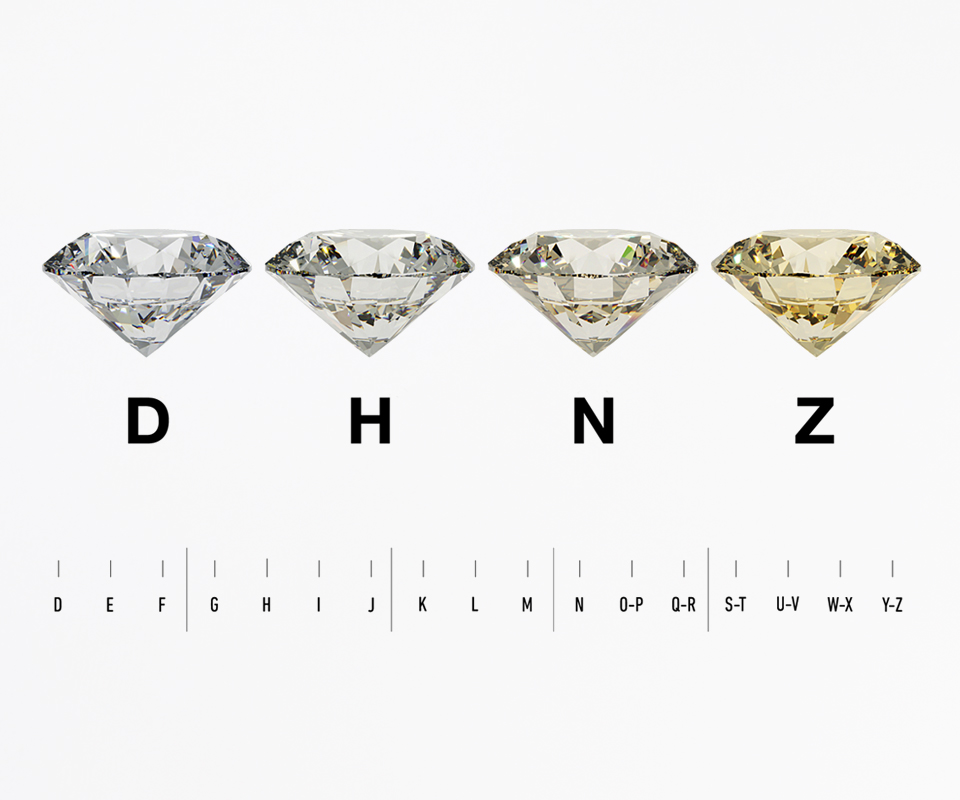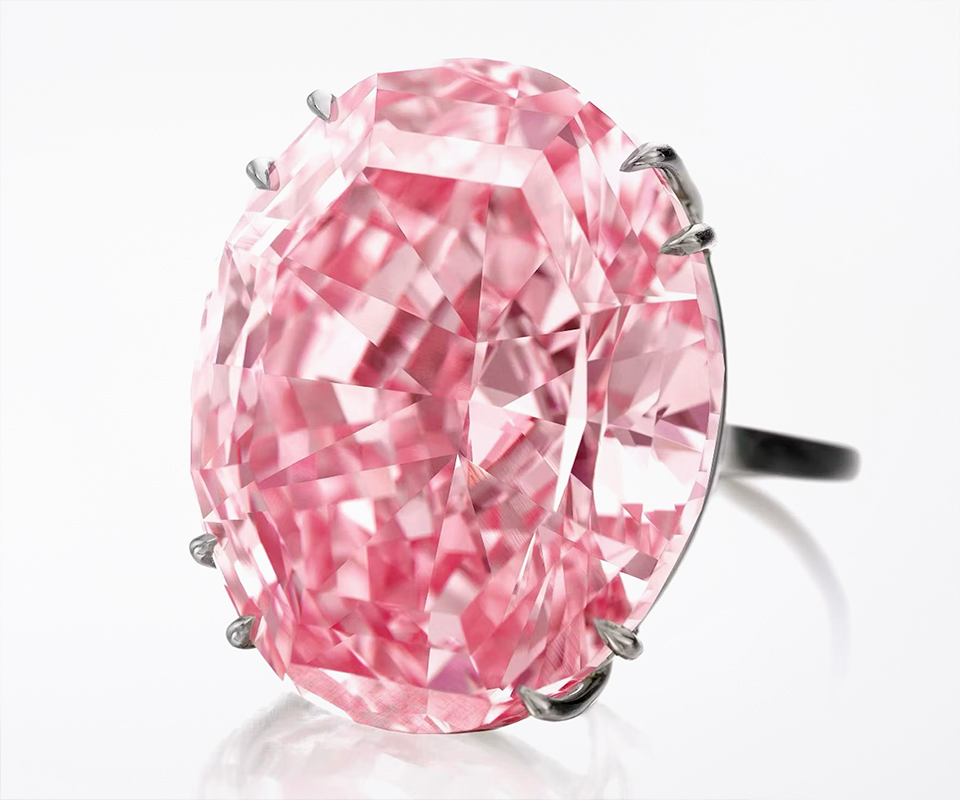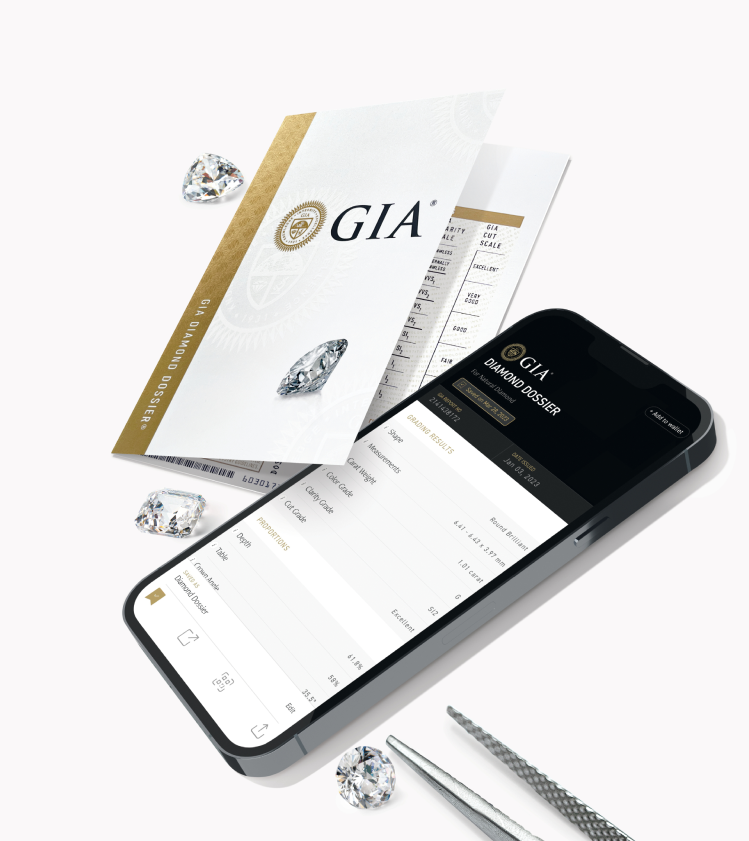The importance of diamond color is clear.
The importance of diamond color is clear.
Photo courtesy of The Clear Cut.
Diamond Color
When most people imagine a diamond, they picture one with little to no hue. Often when we talk about diamond color, we are actually talking about the absence of color.
As subtle as color distinction may be, color variations from the most obvious to subdued can drastically alter diamond quality and price.
Diamonds actually come in a variety of hues, from colorless to yellow, gray, brown and nearly every shade of the rainbow. Luckily, diamond color isn’t a matter of opinion. Proper color evaluation is a matter of expertise.
The correct way to evaluate diamond color is in precise conditions, under controlled lighting, where stones are compared to masterstones with established color grades.
Once properly evaluated, color is documented based on the GIA D-to-Z Color Scale. From D for colorless to Z for light.
The GIA D-to-Z Color Scale.
Color is relative. And before we created a universal grading scale, so was the language that surrounded diamond color. From letters, to numbers, Roman numerals, and even terms like “blue white” were used, causing misunderstanding, misinterpretations, and in some cases, misrepresentations of diamond color.
Today, the D-to-Z diamond color scale as followed by the GIA laboratory is regarded globally as the universal standard for color grading.


Starting where others left off.
The GIA D-to-Z Color Scale starts with D. To avoid confusion, comparison, or association with previous systems, GIA begins with the letter D as the top (colorless) grade.
The result is a universally accepted scale that has brought consistency to the conversation around diamond color.
The evolution of evaluating color.
Before the GIA D-to-Z Color Scale, the language surrounding diamond color and the methods of evaluation were chaotic at best. Establishing a scale for color grading is only as effective as the standardization of the evaluations themselves.
In 1953, GIA introduced the GIA D-to-Z Color Scale, providing the industry with a much-needed system of absolutes, ensuring precise, accurate, objective color-grading could take place.
The GIA D-to-Z Color Scale is used to evaluate the depth of a diamond’s color. The normal color range goes from D for colorless to Z for light yellow, light brown, or light gray, with variations between receiving a color grade.
Today, the GIA D-to-Z Color Scale provides an internationally recognized scale for grading color depth which not only accounts for the colors we can see, but the subtle differences in each hue that define the quality of a diamond.


What does Fancy color mean?
Fancy color refers to any diamond with a color outside of the normal color range. Unfortunately, there are no universal guidelines on the use of the term Fancy when describing color, but there is a general agreement within the gem and jewelry industry that it refers to yellow or brown diamonds that have more color than a Z masterstone or they exhibit a color other than yellow, gray or brown.
What does Fancy color mean?
Fancy color refers to any diamond with a color outside of the normal color range. Unfortunately, there are no universal guidelines on the use of the term Fancy when describing color, but there is a general agreement within the gem and jewelry industry that it refers to yellow or brown diamonds that have more color than a Z masterstone or they exhibit a color other than yellow, gray or brown.


Expertise at your fingertips.
You don’t need to be a gemologist to purchase a diamond with confidence. You just need to know where to find one.
GIA is the trusted benchmark for diamond grading. Download the GIA App now to learn more about the 4Cs and look up GIA reports.
Expertise at your
fingertips.
You don’t need to be a gemologist to purchase a diamond with confidence. You just need to know where to find one.
GIA is the trusted benchmark for diamond grading. Download the GIA App now to learn more about the 4Cs and look up GIA reports.
GIA Report Check
Access your GIA Grading Report results using your GIA report number.